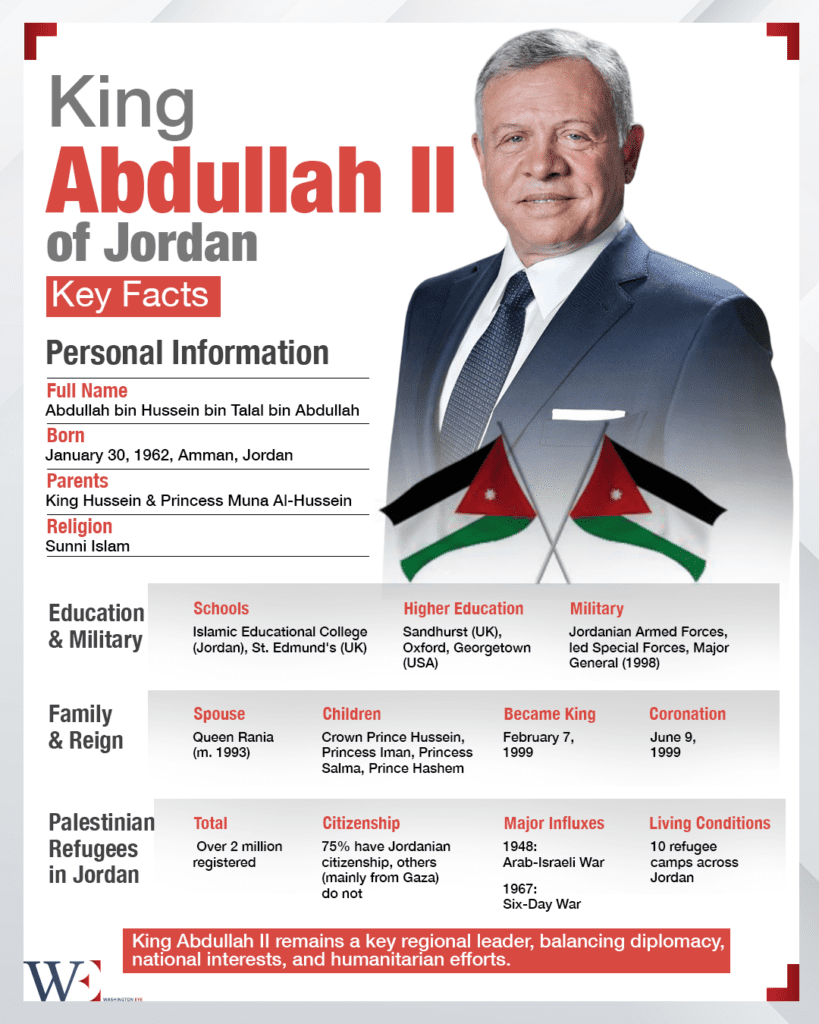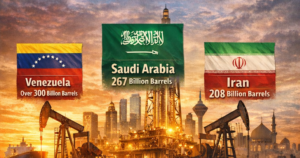In the intricate web of Middle Eastern diplomacy, few leaders navigate its complexities as deftly as King Abdullah II of Jordan. His recent engagement with U.S. President Donald Trump showcased a masterclass in balancing national interests with regional dynamics, all while addressing ambitious—and controversial—visions proposed by global powers.
Setting the Stage
The backdrop to this diplomatic encounter was President Trump’s bold proposal to transform the Gaza Strip. Envisioning Gaza as the “Riviera of the Middle East,” Trump suggested relocating its approximately 2 million Palestinian residents to neighbouring countries, subsequently redeveloping the area into a premier tourist destination under U.S. oversight. He stated, “They’re going to have much better housing,” emphasising the supposed benefits of his plan.
This proposal, however, was met with widespread criticism. Many viewed it as a violation of international law, with concerns about forced displacement and the erasure of Palestinian heritage. Despite the controversy, Trump remained resolute in his vision, believing it to be a solution for the region’s long-standing conflicts.
The Diplomatic Ballet
Amidst this contentious atmosphere, King Abdullah II approached his meeting with President Trump with characteristic finesse. Understanding the importance of U.S. involvement in the region, he began by acknowledging America’s pivotal role.
“Achieving just peace on the basis of the two-state solution is the way to ensure regional stability. This requires US leadership,” he remarked, subtly appealing to Trump’s vision of himself as a dealmaker.
Demonstrating Jordan’s commitment to humanitarian efforts, the King announced that his nation would accept 2,000 ill children from Gaza for medical treatment. This proactive gesture not only addressed immediate human suffering but also positioned Jordan as a compassionate leader in the Arab world.
King Abdullah was candid about Jordan’s stance on the displacement of Palestinians.
He reiterated the unified Arab position against such moves, emphasizing, “I reiterated Jordan’s steadfast position against the displacement of Palestinians in Gaza and the West Bank. This is the unified Arab position.”
By doing so, he underscored the collective regional perspective while highlighting Jordan’s alignment with broader Arab consensus.
Balancing Act
Throughout the discussions, King Abdullah maintained a delicate balance. He was friendly and cordial, even as he navigated topics that could have led to discomfort.
When Trump proposed relocating Palestinians and mentioned plans involving Egypt and discussions initiated by Saudi Crown Prince Mohammed bin Salman, the King responded diplomatically, stating, “We have to keep in mind how to make this work in everyone’s best interest.”
He further emphasized, “I have to do what is best for my country,” signaling Jordan’s priority of safeguarding its national interests.
A Testament to Hashemite Diplomacy
King Abdullah’s approach exemplifies the calculated pragmatism required in Middle Eastern diplomacy. By appealing to Trump’s ego, making concrete humanitarian offers, and framing Arab responses within U.S. interests, he positioned Jordan as a key interlocutor.
His careful balance between regional solidarity and national interest reflects the nuanced survival strategy of smaller states navigating great power politics.
This is classic Hashemite diplomacy—engaging power without confrontation, ensuring Jordan remains relevant while safeguarding its stability.
In a region fraught with tension and competing agendas, King Abdullah II’s recent diplomatic engagement serves as a reminder of the power of measured dialogue and the importance of maintaining one’s principles amidst external pressures.


















